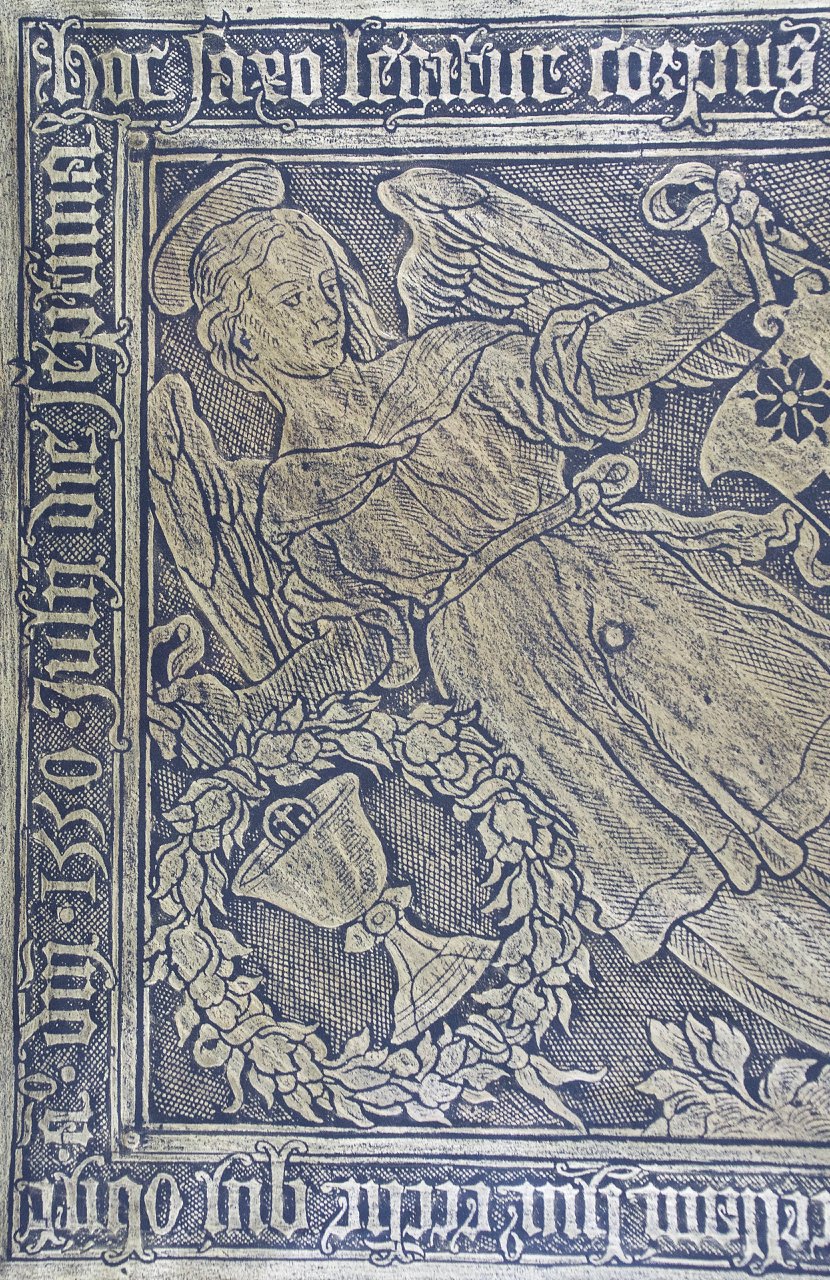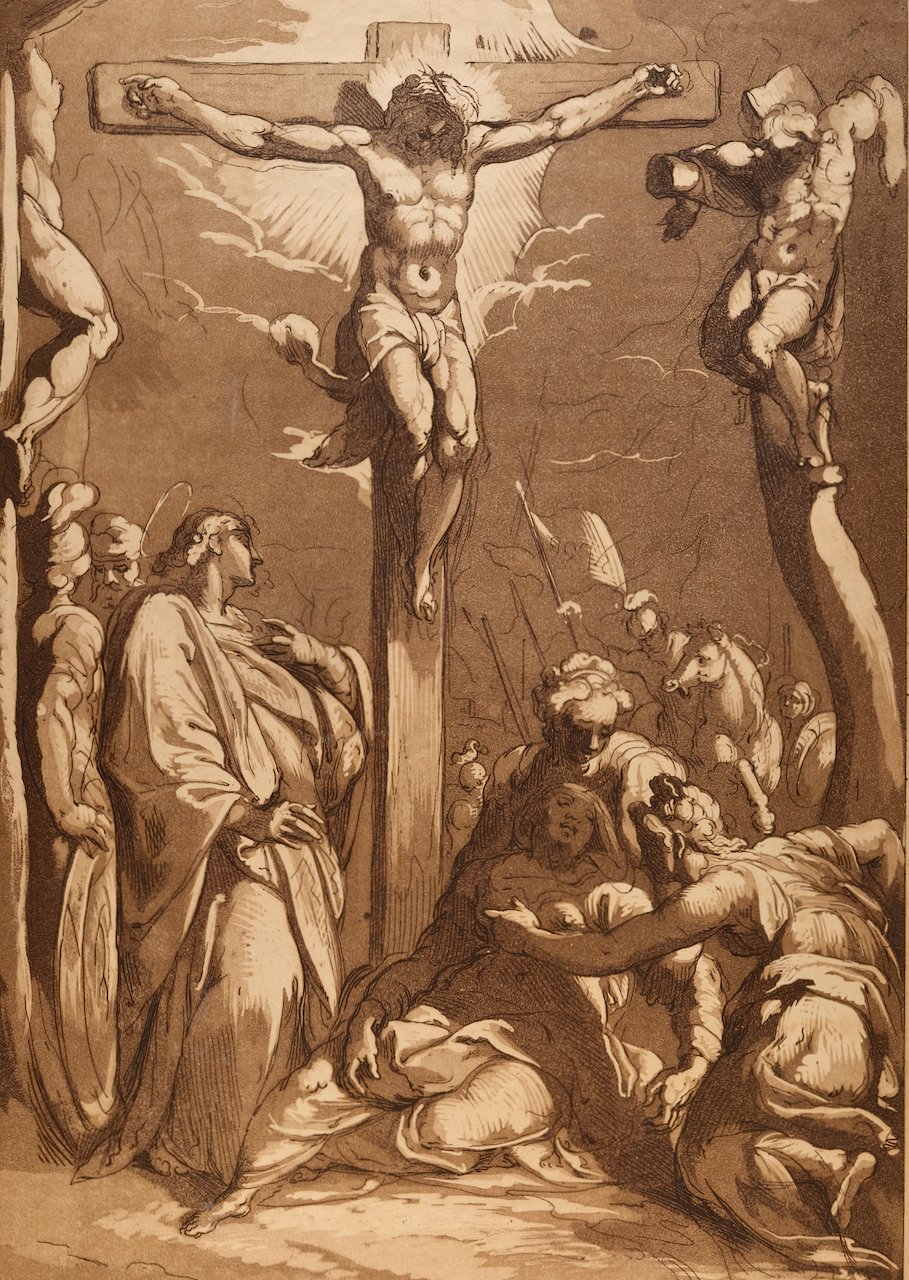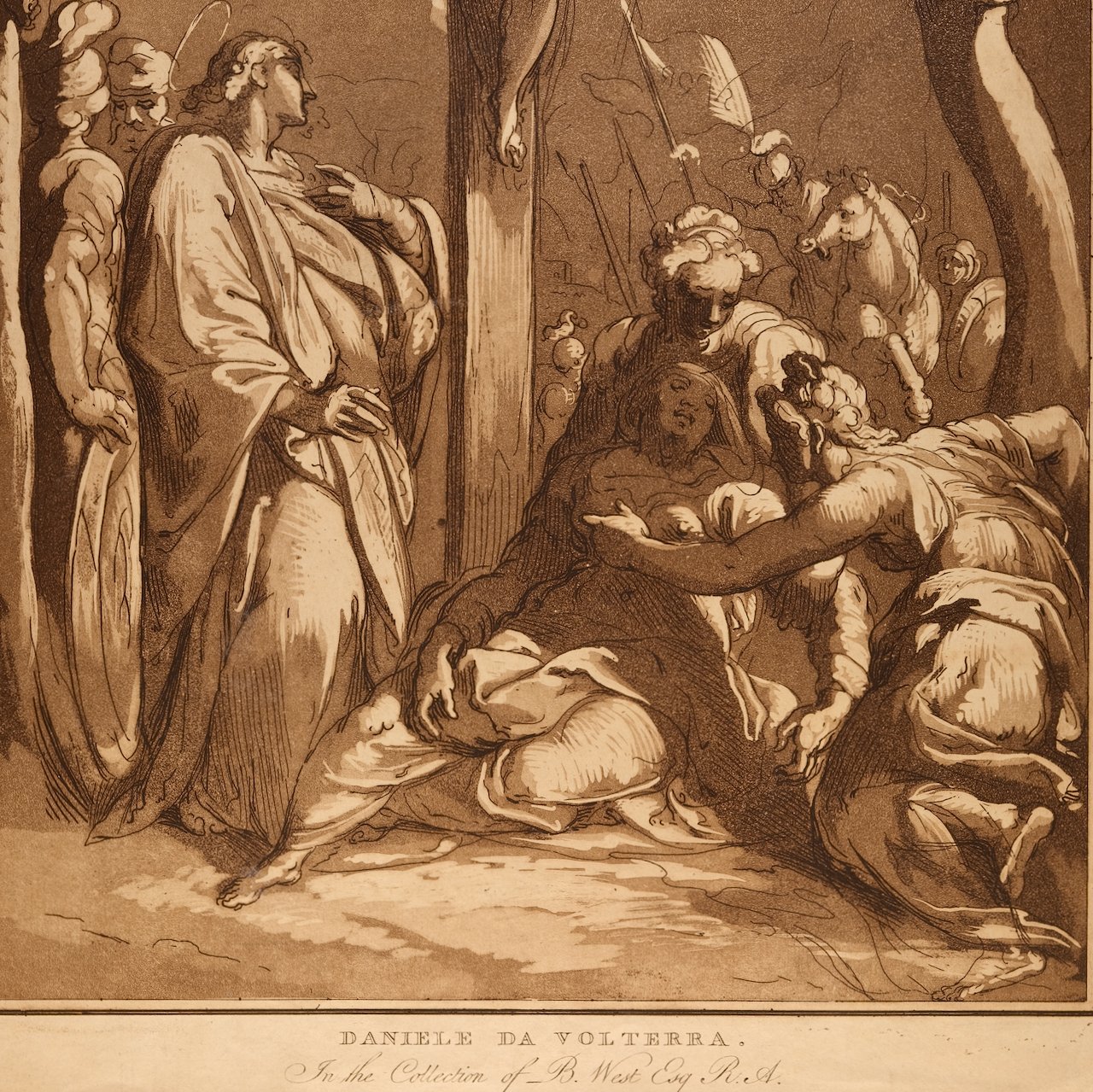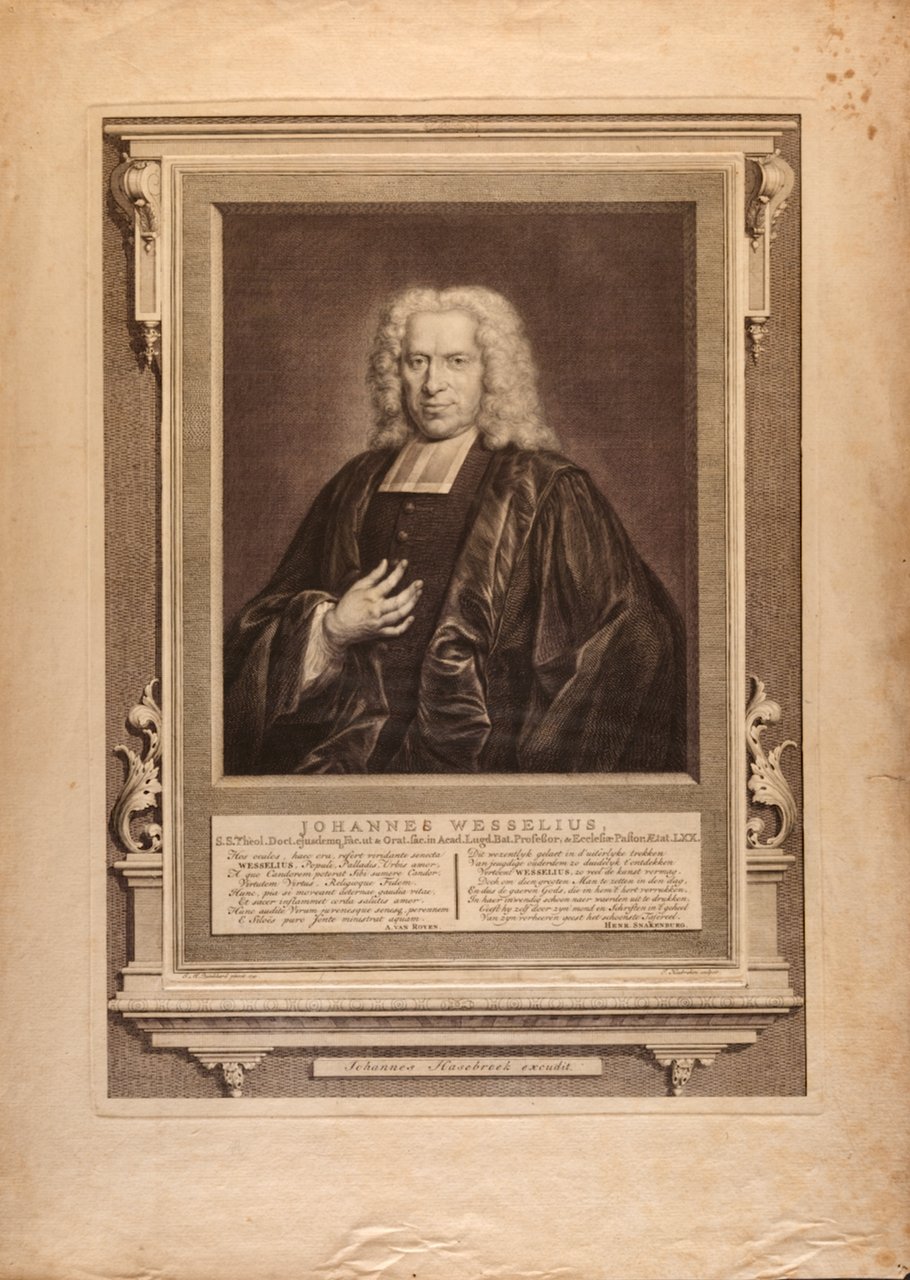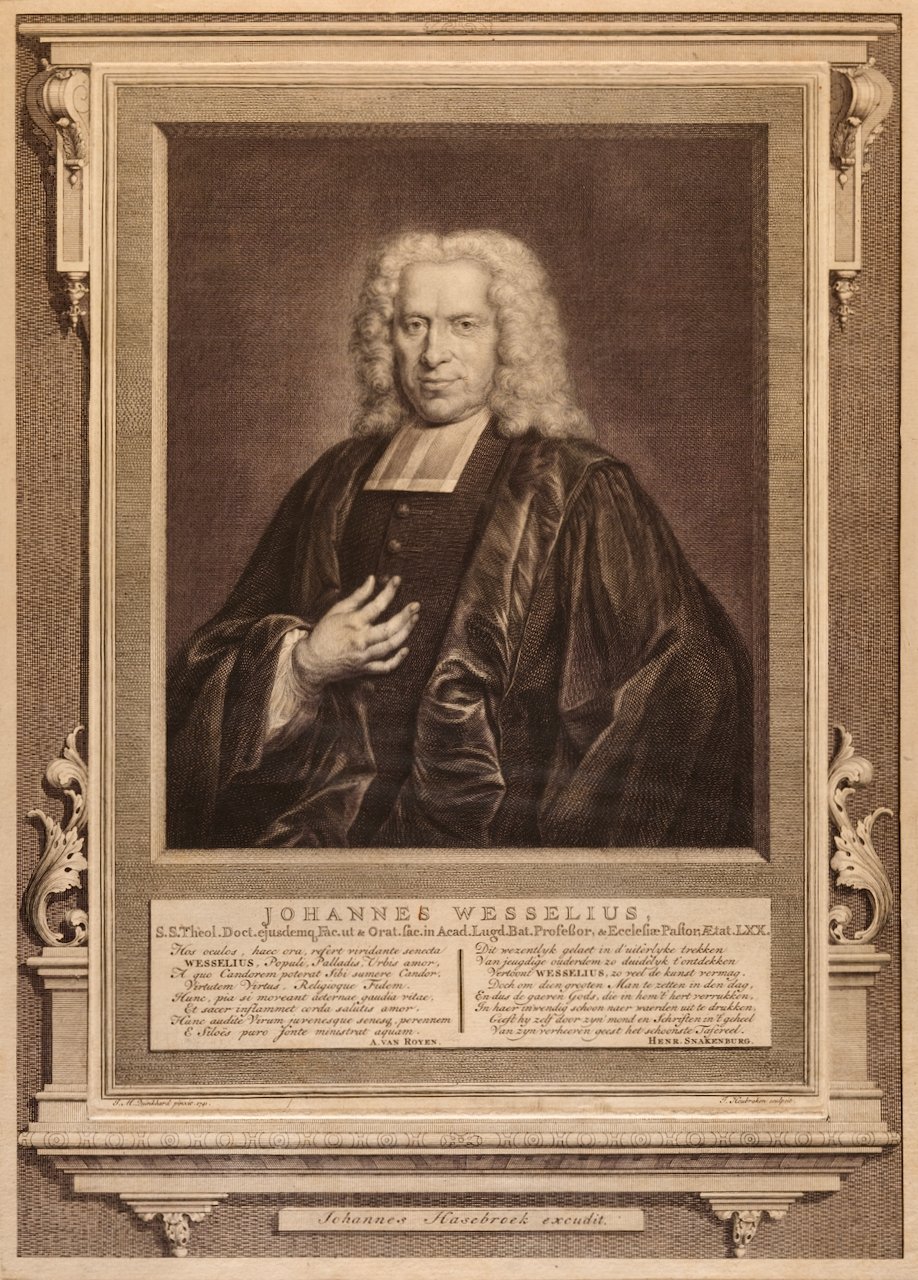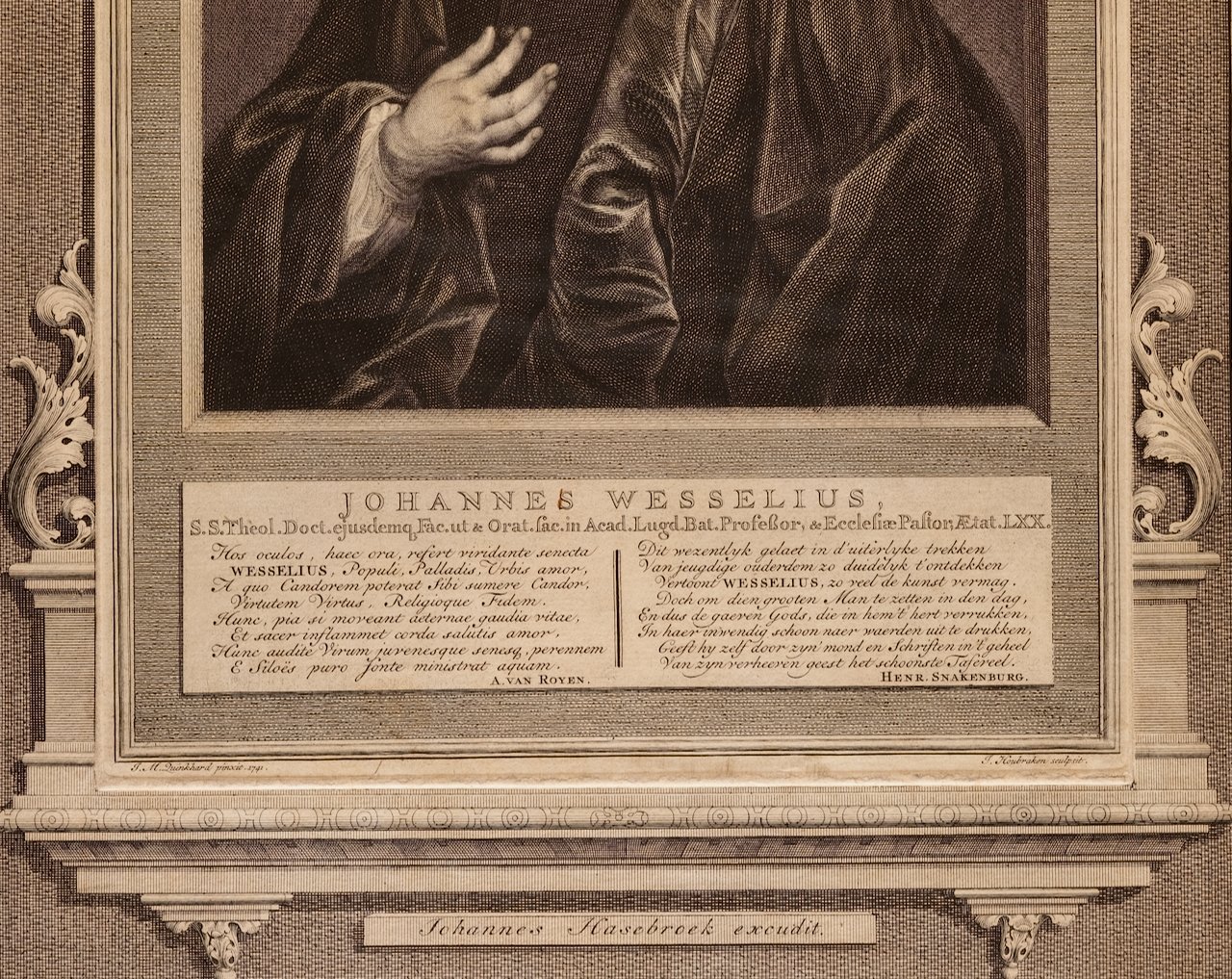Framed Rubbing of 1550 Brass Monument in Grote Kerk Church, Breda, Netherlands
This is an engraving of a tomb monument rubbing that has been highlighted with gold color on a dark grey to black background. The rubbing is of a brass plaque on a stone slab. It has inscriptions along the edges and an angel with a halo holding a chalice and shield. The inscription reads "Hoc saxo tegitur corpus honorabilis viri domini Adriani Roelandi Bartholomei alias Heys, sacellani huius ecclesie, qui obiit Anno Domini 1550 Iulii die septima" (Covered by this stone is the body of the honorable man, Sir Adrianus son of Roelandt Bartholomeus, alias Heys, priest of this church, who died in the year of Our Lord 1550 on the seventh day of July). Along with images of the print in this listing, an image of the actual tomb with the brass plaque is included. The tomb is in the Grote Kerk or Onze-Lieve-Vrouwekerk (Church of Our Lady), which is a prominent landmark in Breda, in the southern portion of the Netherlands. The oldest record of a stone church in Breda is from 1269. The construction of this church was begun in 1410. It was completed in 1457 but the tower collapsed in 1468. The reconstruction of the tower was completed in 1509. Although in use, additional construction projects continued until 1547. The Reformation ended the church as a Catholic place of worship in 1566 and it transitioned to Protestant in 1637.
Creator: Unknown
Creation Year: Unknown
Dimensions: Height: 32.25 in (81.92 cm) Width: 32.25 in (81.92 cm) Depth: 1.5 in (3.81 cm)
Medium: Engraving
Condition: See description below.
This is an engraving of a tomb monument rubbing that has been highlighted with gold color on a dark grey to black background. The rubbing is of a brass plaque on a stone slab. It has inscriptions along the edges and an angel with a halo holding a chalice and shield. The inscription reads "Hoc saxo tegitur corpus honorabilis viri domini Adriani Roelandi Bartholomei alias Heys, sacellani huius ecclesie, qui obiit Anno Domini 1550 Iulii die septima" (Covered by this stone is the body of the honorable man, Sir Adrianus son of Roelandt Bartholomeus, alias Heys, priest of this church, who died in the year of Our Lord 1550 on the seventh day of July). Along with images of the print in this listing, an image of the actual tomb with the brass plaque is included. The tomb is in the Grote Kerk or Onze-Lieve-Vrouwekerk (Church of Our Lady), which is a prominent landmark in Breda, in the southern portion of the Netherlands. The oldest record of a stone church in Breda is from 1269. The construction of this church was begun in 1410. It was completed in 1457 but the tower collapsed in 1468. The reconstruction of the tower was completed in 1509. Although in use, additional construction projects continued until 1547. The Reformation ended the church as a Catholic place of worship in 1566 and it transitioned to Protestant in 1637.
Creator: Unknown
Creation Year: Unknown
Dimensions: Height: 32.25 in (81.92 cm) Width: 32.25 in (81.92 cm) Depth: 1.5 in (3.81 cm)
Medium: Engraving
Condition: See description below.
This is an engraving of a tomb monument rubbing that has been highlighted with gold color on a dark grey to black background. The rubbing is of a brass plaque on a stone slab. It has inscriptions along the edges and an angel with a halo holding a chalice and shield. The inscription reads "Hoc saxo tegitur corpus honorabilis viri domini Adriani Roelandi Bartholomei alias Heys, sacellani huius ecclesie, qui obiit Anno Domini 1550 Iulii die septima" (Covered by this stone is the body of the honorable man, Sir Adrianus son of Roelandt Bartholomeus, alias Heys, priest of this church, who died in the year of Our Lord 1550 on the seventh day of July). Along with images of the print in this listing, an image of the actual tomb with the brass plaque is included. The tomb is in the Grote Kerk or Onze-Lieve-Vrouwekerk (Church of Our Lady), which is a prominent landmark in Breda, in the southern portion of the Netherlands. The oldest record of a stone church in Breda is from 1269. The construction of this church was begun in 1410. It was completed in 1457 but the tower collapsed in 1468. The reconstruction of the tower was completed in 1509. Although in use, additional construction projects continued until 1547. The Reformation ended the church as a Catholic place of worship in 1566 and it transitioned to Protestant in 1637.
Creator: Unknown
Creation Year: Unknown
Dimensions: Height: 32.25 in (81.92 cm) Width: 32.25 in (81.92 cm) Depth: 1.5 in (3.81 cm)
Medium: Engraving
Condition: See description below.





